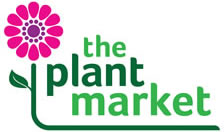Bring back the bees
The humble bumblebee is a hard-working creature but, as you may know, their populations are in decline.
You may be starting to see the return of our fuzzy friends in your gardens as it starts to warm up. The bees you’re seeing are queen bees who are emerging from hibernation and are looking to feed on nectar-rich flowers to build their energy stores. Once fed, these queen bees will look for a nest which will be built, by her workers, over the summer to feed the developing larvae.
In late summer, the nests begin to produce males and new queens. Producing new queens and males takes a lot of energy, and nests can only do this when they reach a large size, with a good store of food. And that’s where you come in!
It’s important to have a range of plants available for bumblebees through all stages of their lifecycle, from those early queens to the workers supplying the nest, to the males and new queens at the end of the summer.
With that in mind, these are the plants which will help feed the bees and encourage them to your outdoor space.
What to grow and when
Spring flowers
- Flowering currant • Lungwort • Pussy willow • Bluebell • Crocus • Bugle • Mahonia • Peris • Grape hyacinth • Hellebore
Early summer flowers
- Allium • Borage • Catmint • Cranesbill • Poppy • Sweet pea • Aquilegia • Campanula • Globe thistle • Thyme
Late summer flowers
- Buddleia • Cosmos • Honeysuckle • Lupin • Nasturtium • Verbena • Cornflower • Echinacea • Lavender • Sedum
Create a space for them to nest
Aside from having the right plants for bees, you can help by creating an area where they are safe to nest. Most species nest just above or just below ground. Many nests are created in dry, dark cavities such as inside old rodent burrows and under sheds. Of those that nest above ground, some make nests in thick grass, while others make nests in bird boxes, lofts and in trees. It’s important to leave some parts of the garden undisturbed and unmanaged, to encourage wild areas where queens can set up nests. Some species do nest higher up, in compost heaps and even bird boxes.*
* To find out more about gardening for bumblebees and to see how bumblebee friendly your garden is with our Bee kind tool, visit www.bumblebeeconservation.org/garden-advice




